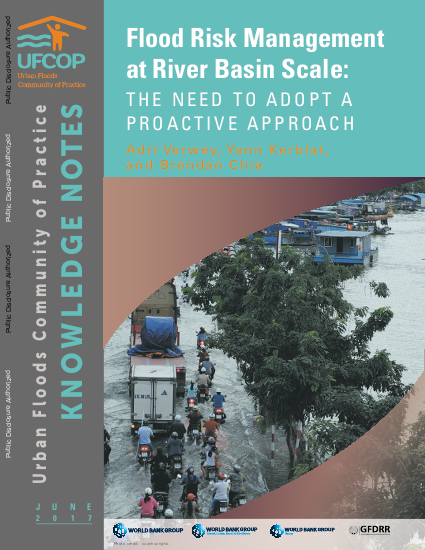
The number of people living in flood-prone areas is estimated to be 1.3 billion by 2050, or 15 percent of the global population. This number represents an increase of 0.3 billion over the present (Ligtvoet et al. 2014) and takes into account both river and coastal flooding. Looking at river flooding specifically, the World Resources Institute (2015) has demonstrated that this hazard affects 21 million people around the world every year. In 2030, that number could rise to 54 million per year, with ongoing urbanization and climate change driving the increase and putting more people in harm’s way.
While large infrastructure investments are being made to mitigate flood disaster risk, disasters continue to take their toll, in part because of ongoing changes in land use and land management. In rural areas, for example, agricultural fields are gradually replacing forests, and drainage improvements for agricultural land have led to increased flood peaks. Developments have also taken place in urban areas, where natural land cover is converted to paved, impervious surfaces over which rainfall runs more rapidly into drains and rivers. The construction of urban drainage systems may also release runoff more quickly into water bodies that are downstream and that may have insufficient carrying capacity. This trend can therefore increase the risk of flooding over time.
Across regions, decision makers and at-risk populations have realized that they can no longer afford to wait for the next flood to come. Developed countries have made progress in instituting policy reforms and putting in place integrated solutions for flood risk management, but developing countries too are growing more interested in implementing methods and policies for improving flood risk management at the river basin level. This Technical Note offers substantial guidance for decision makers tasked with considering flood management options.
The note addresses the following issues: It examines the nature of floods, focusing in particular on the important function of flood volume retention and the conveyance of excess water out of river basins. Based on this account, it discusses flood management options that can be implemented as part of a proactive approach, one that seeks to avoid the disasters that may result from a “wait and see” approach. In this context, it describes the role of flood hazard and flood risk mapping in decision making. The note also explores the distinct roles and comparative advantages of structural and nonstructural measures in managing flood risk. In addition, it provides guidance on flood risk assessment methodologies, including the role of numerical simulation models and their data requirements, and also includes a summary of the key principles of flood risk management. All these parts together serve to demonstrate the importance of understanding flood phenomena and assessing flood risks.
Links
Resource collections
- Floods
- Learning from crises
- UN Habitat - Urban Response Collection
- Urban Response - Urban Crisis Preparedness and Risk Reduction
- Urban Response Collection - Community Engagement and Social Cohesion
- Urban Response Collection - Economic Recovery
- Urban Response Collection - Environment and Climate Change
- Urban Response Collection - Housing, Land and Property
- Urban Response Collection - Urban Crisis Response, Recovery and Reconstruction
- Urban Response Collection - Urban Resilience